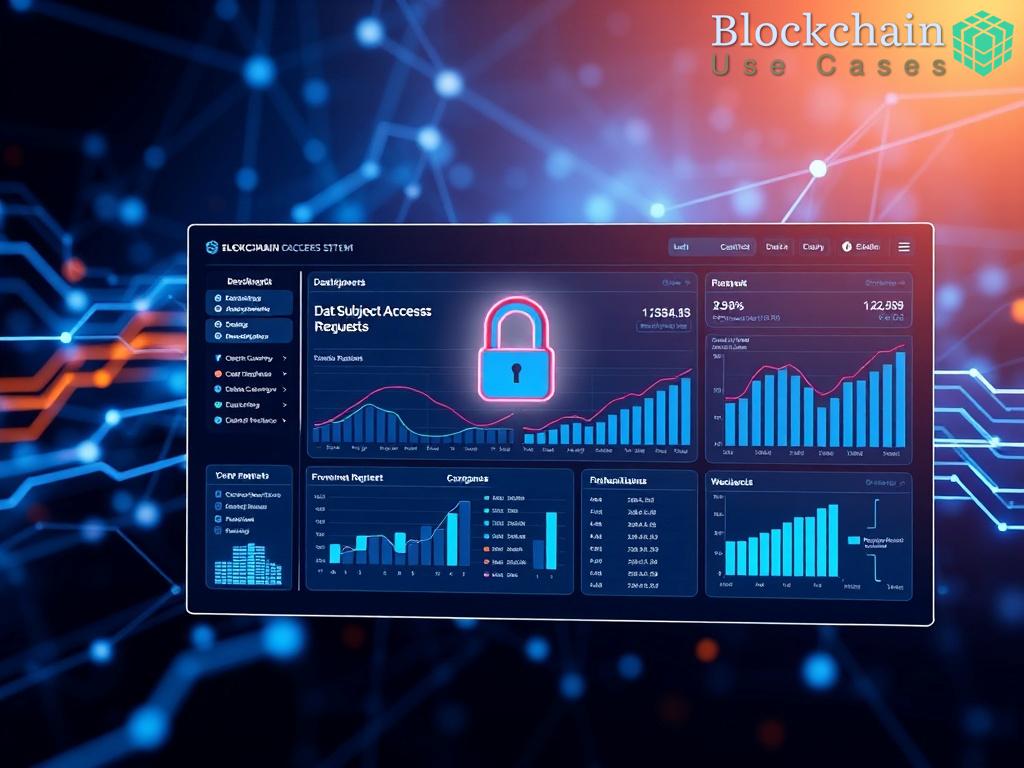Overview of Decentralized Capacity Markets
As the demand for sustainable energy solutions grows, decentralized systems are increasingly becoming the backbone of capacity markets in electricity grids. These systems offer flexibility, efficiency, and transparency, enabling a more responsive approach to energy management. This shift not only empowers local communities but also fosters innovation in energy distribution and consumption.
Decentralized capacity markets function on principles that distinguish them from traditional, centralized systems. By utilizing blockchain technology and peer-to-peer networks, these markets provide a platform for various stakeholders—including consumers, producers, and service providers—to engage directly in energy transactions.
- Transparency: All transactions are recorded on a public ledger, ensuring accountability and reducing the risk of fraud.
- Accessibility: Smaller producers and consumers can participate in capacity markets, democratizing energy production.
- Flexibility: Decentralized models can quickly adapt to changes in supply and demand, improving grid reliability.
- Cost Efficiency: Reduced overhead costs lead to better pricing for consumers and higher margins for producers.
While decentralized capacity markets present numerous benefits, they are not without challenges. Regulatory frameworks must evolve to accommodate these new systems, ensuring fair competition and consumer protection. Additionally, the integration of existing infrastructure with decentralized networks requires significant investment and technological advancements.
Technological Frameworks for Decentralized Systems

In the rapidly evolving landscape of energy management, technological frameworks play a crucial role in enabling decentralized systems within capacity markets. These frameworks not only support the seamless integration of diverse energy sources but also enhance the operational efficiency of electricity grids. By leveraging advanced technologies, stakeholders can harness the full potential of decentralized models.
One of the most transformative technologies in this realm is blockchain. This decentralized ledger technology ensures that all transactions are transparent and immutable, fostering trust among participants. With blockchain, energy transactions can occur directly between consumers and producers, devoid of intermediaries, resulting in lower costs and faster settlement times. Furthermore, the implementation of smart contracts automates processes, minimizing the potential for human error and enhancing operational efficiency.
Another significant technological advancement is the use of Internet of Things (IoT) devices. These interconnected devices collect real-time data on energy consumption and generation, providing valuable insights into grid dynamics. IoT sensors can monitor energy usage patterns, enabling demand response strategies that optimize energy distribution based on current needs. This responsiveness is key to maintaining grid stability and minimizing wastage.
Moreover, artificial intelligence (AI) plays an increasingly important role in enhancing the decision-making capabilities of decentralized systems. AI algorithms can analyze vast amounts of data to predict energy demand and supply fluctuations, allowing for proactive adjustments in capacity management. This predictive capability not only improves grid reliability but also supports the integration of renewable energy sources, which are often variable in nature.
As we delve deeper into the various technological frameworks that underpin decentralized systems, it is essential to recognize the importance of interoperability. For decentralized capacity markets to function effectively, different technologies and platforms must seamlessly communicate with one another. This requires standardized protocols and governance frameworks that facilitate collaboration among diverse stakeholders.
| Technology | Key Features | Impact on Decentralized Systems |
|---|---|---|
| Blockchain | Transparency, Security, Smart Contracts | Reduces Costs, Enhances Trust |
| IoT | Real-time Data, Connectivity | Improves Efficiency, Enables Demand Response |
| AI | Predictive Analytics, Automation | Optimizes Decision-Making, Enhances Grid Reliability |
As these technological frameworks continue to evolve, the landscape of decentralized capacity markets will undoubtedly become more sophisticated. The ongoing integration of innovative solutions will not only drive efficiency but also pave the way for a more resilient and sustainable energy future.
Benefits and Challenges of Decentralized Management
Decentralized management of capacity markets in electricity grids has emerged as a transformative force, offering a multitude of benefits that cater to the evolving demands of energy stakeholders. These advantages not only reshape the operational landscape but also enhance the overall experience for consumers and producers alike.
1. Enhanced Consumer Empowerment: One of the primary benefits is the empowerment of consumers. In decentralized systems, individuals can engage directly in energy transactions, choosing energy sources that align with their sustainability preferences. This shift fosters a sense of ownership and responsibility towards energy consumption.
2. Increased Market Efficiency: By facilitating peer-to-peer transactions, decentralized capacity markets reduce reliance on intermediaries, leading to lower transaction costs. The elimination of unnecessary layers in the trading process enhances market efficiency, resulting in better pricing for consumers while ensuring higher returns for producers.
3. Improved Reliability and Resilience: Decentralized models allow for a more resilient grid capable of adapting to fluctuations in supply and demand. When one part of the system encounters issues, localized solutions can be implemented quickly, minimizing the impact on the entire grid.
While the advantages of decentralized management are compelling, it is crucial to address the challenges that accompany this transition. Understanding these obstacles is essential for stakeholders aiming to harness the full potential of decentralized capacity markets.
1. Regulatory Hurdles: The current regulatory frameworks often lag behind the rapid advancements in decentralized technologies. Policymakers must work diligently to create adaptable regulations that ensure fair competition and consumer protection in an evolving market landscape.
2. Technological Integration: The successful implementation of decentralized systems necessitates the integration of various technologies, including blockchain and IoT. However, the existing infrastructure may require substantial upgrades, posing financial and logistical challenges for stakeholders.
3. Data Security Concerns: As decentralized systems rely heavily on data exchange, ensuring the security and privacy of user information becomes paramount. Stakeholders must implement robust cybersecurity measures to safeguard sensitive data and maintain trust among participants.
To navigate the complexities of decentralized systems effectively, it is essential to maintain a balanced perspective that appreciates both the benefits and challenges. By acknowledging these elements, stakeholders can implement strategies that leverage the strengths of decentralized management while mitigating potential drawbacks.
Considerations for Stakeholders: Here are key considerations that stakeholders should keep in mind as they explore decentralized capacity markets:
- Continuous Learning: Stakeholders must remain informed about emerging technologies and regulatory changes to adapt their strategies accordingly.
- Collaboration: Building partnerships among various participants can foster innovation and enhance the overall efficiency of decentralized systems.
- Investment in Training: Providing education and training for consumers and producers alike ensures that all parties are equipped to navigate decentralized markets effectively.
Case Studies: Successful Implementations
The shift towards decentralized capacity markets has not only been a theoretical concept but has also been executed successfully in various regions around the globe. These implementations serve as inspiring case studies that demonstrate the viability and advantages of decentralized energy systems. From innovative community energy projects to advanced technological integrations, these examples highlight how local initiatives can drive significant change in energy management.
One of the standout examples is the Brooklyn Microgrid in New York, where residents have taken the initiative to create a local energy marketplace. By utilizing blockchain technology, residents can buy and sell excess solar energy directly to each other, eliminating the need for traditional utility intermediaries. This decentralized model has not only empowered consumers but has also fostered a communal spirit, allowing neighbors to support one another in their energy needs. The success of the Brooklyn Microgrid illustrates the potential of local energy solutions to reduce costs while increasing sustainability.
Another notable case is the Power Ledger project in Australia, which has paved the way for peer-to-peer energy trading platforms. This decentralized framework allows users to trade surplus renewable energy generated from solar panels, effectively turning homes into self-sufficient energy hubs. By leveraging blockchain technology, Power Ledger ensures transparency and security in transactions, enhancing trust among participants. The project has not only demonstrated the feasibility of decentralized energy markets but has also shown how such systems can contribute to grid stability by balancing supply and demand locally.
Additionally, Germany’s Energy Transition (Energiewende) initiative has effectively integrated decentralized renewable energy sources into its national grid. The country has witnessed a significant increase in the deployment of solar and wind energy at the community level, facilitated by supportive policies and incentives. This approach has empowered local entities to manage their energy production and consumption, thus reducing reliance on conventional energy sources and enhancing grid resilience.
These case studies exemplify the transformative impact of decentralized systems in energy management. By focusing on local solutions, they highlight the potential for increased efficiency, reduced costs, and enhanced consumer empowerment. Moreover, as these successful implementations continue to evolve, they provide valuable insights for other regions looking to adopt similar decentralized models.
Future Trends in Decentralized Capacity Markets
The landscape of energy management is continuously evolving, and as decentralized capacity markets gain traction, several future trends are anticipated to reshape how these systems operate. Innovations in technology, shifts in consumer behavior, and regulatory changes will play pivotal roles in defining the next generation of decentralized energy solutions. Stakeholders, from producers to consumers, must stay ahead of these trends to harness the full potential of capacity markets in electricity grids.
As technology continues to advance, blockchain, IoT, and AI will become even more integrated into decentralized capacity markets. The future will see the development of more sophisticated blockchain protocols that not only enhance transaction speed but also improve security and scalability. This will allow for a greater number of participants in the market, facilitating a more vibrant and diverse energy ecosystem. Moreover, the integration of IoT devices will empower real-time data collection and analytics, enabling users to make informed decisions about energy consumption and generation. The potential for AI-driven predictive analytics will further optimize energy management, allowing systems to adapt dynamically to fluctuations in demand and supply.
As consumers increasingly prioritize sustainability and efficiency, decentralized capacity markets will evolve to become more consumer-centric. This will manifest in the form of community-based energy initiatives, where local communities collaborate to manage and distribute energy resources. These initiatives will not only foster a stronger sense of community but also enhance resilience against fluctuations in energy supply. In addition, as consumers become more aware of their energy consumption patterns, there will be a rise in demand for personalized energy solutions that cater to individual preferences and sustainability goals. This shift will necessitate an emphasis on user-friendly platforms that simplify engagement in decentralized markets, ensuring that all consumers, regardless of technical expertise, can participate effectively.
Furthermore, as decentralized systems gain mainstream acceptance, we can expect to see policy frameworks that support innovation while safeguarding consumer rights. Regulators will need to strike a balance between encouraging competition and ensuring fairness, leading to the development of new guidelines that foster a thriving decentralized energy landscape.


















